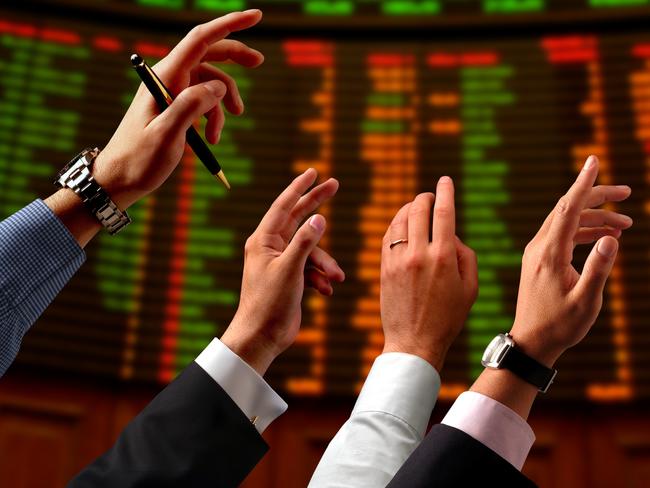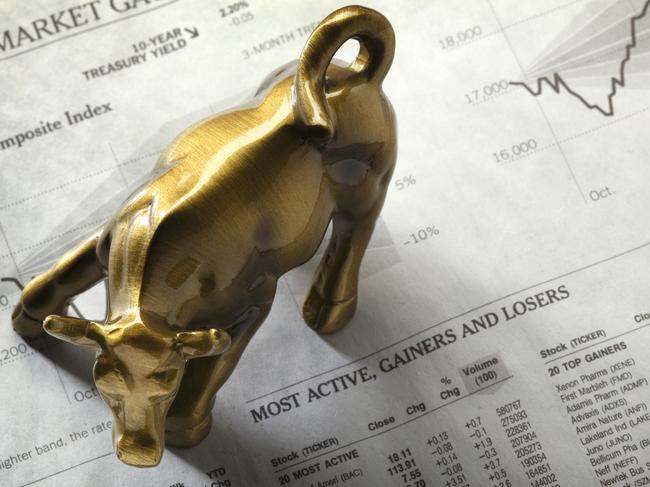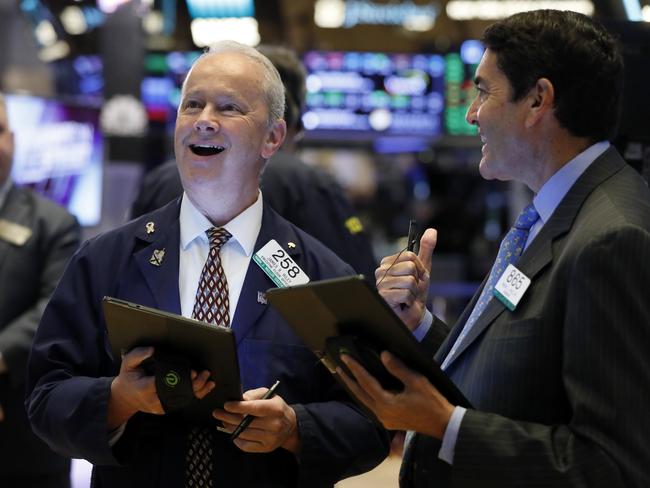Aussie share market finally hits record high after 12 years in wilderness
Finally. After 12 long years, the Aussie share market has smashed through the record it set on the eve of the global financial crisis. Here are the stocks that have shot the lights out along the way — and those that have bombed.
Business
Don't miss out on the headlines from Business. Followed categories will be added to My News.
AUSTRALIA’S share market has clawed its way to a record high, finally shaking off its hangover from the global financial crisis as investors bet interest rates will stay lower for longer.
The nation’s benchmark share index, the ASX 200, today closed at 6845.1 points, eclipsing a record that had stood for almost 12 years.
It follows a stellar run by Aussie stocks that has added more than $350 billion to the value of the nation’s top listed companies since the start of the year.
But the new high has been greeted with caution rather than champagne corks by fund managers, who say while shares can continue to rise, their gains are being fuelled by low interest rates rather than a booming economy.

That, they warn, opens up new risks for investors shifting money into shares as returns from less risky fixed-interest investments, such as term deposits, all but disappear.
“There is an absence of value but that doesn’t stop share prices from going up,” Montgomery Investment Management chief investment officer Roger Montgomery told Business Daily.
The ASX 200, which broadly tracks the value of the nation’s 200 biggest listed companies, closed 0.3 per cent higher today. It also hit a new intraday high of 6875.5 points.
The gains take the index past its previous peak closing level of 6828.7 points.
That record had been set on November 1, 2007 — ahead of the GFC, which savaged markets across the globe and plunged the US into its worst economic downturn since the Great Depression.
The broader All Ordinaries index, which tracks the 500 biggest listed companies in Australia, broke through its pre-GFC peak last week.
Both indices have risen more than 20 per cent this year as major central banks have either cut interest rates or indicated they are about to as the global economy slows.

Strong commodity prices boosting the fortunes of the big miners, coupled with a rebound in banks sold off in the wake of the financial services royal commission and a new boom among technology companies, have also fuelled the market.
Mr Montgomery said although companies’ share prices were at eye-watering levels compared with historical earnings, an extended era of interest low rates could yet push markets higher across the globe.
“Everything we have heard from the Reserve Bank, everything we are hearing from the (US) Fed and the European Central Bank, is that they are going to stimulate,” he said.
“If you get a situation where the economy is growing reasonably well, and the central banks are going to stimulate anyway, and President Trump and President Xi reach a trade agreement, you have got the ingredients of a very strong market despite the fact that there may be an absence of value.”

Wilson Asset Management founder Geoff Wilson echoed the concern that share markets were being fuelled by low interest rates and the possible return of money-printing programs, rather than robust economic conditions.
“Equity markets have been driven over the past decade by record low interest rates and easy money being pumped into the system via quantitative easing,” he said.
“It’s the longest bull market ever in the US and at some point in time the bull market will come an end.”
The two fund managers oversee share portfolios worth $5 billion between them.
READ MORE
MCCRANN: BOOM ON BORROWED TIME
Over the 12 years since the Aussie market’s previous peak, the best performing company has been Perth-based gold miner Northern Star Resources.
It has chalked up a total return, which assumes dividends are reinvested, of about 14,100 per cent. Investors who tipped in $1000 on November 1, 2007, and spent their dividends on additional stock would now have a shareholding worth $141,000.
Software company Altium is next with a return of about 5400 per cent, while fund manager Magellan Financial is third, with a return of about 5300 per cent.
At the other end of the scale, investors who put $1000 into agribusiness Elders would now have $50.
Winners and losers in the ASX 200
The top 10
What $1 invested on November 1, 2007, would be worth now (approximate total return, assuming dividends are reinvested).
1. Northern Star Resources — $141.05
2. Altium — $54.05
3. Magellan Financial — $53.10
4. TPG Telecom — $23.75
5. NIB — $22.94
6. Nearmap — $22.05
7. Sandfire Resources — $20.77
8. Domino’s Pizza — $19.89
9. REA Group — $15.89
10. Breville — $14.84
The bottom 10
What $1 invested on November 1, 2007, would be worth now (approximate total return, assuming dividends are reinvested). Excludes companies that have folded or otherwise exited the ASX 200 index.
1. Elders — 5c
2. Aveo — 13c
3. Lynas — 27c
4. Emeco — 27c
5. Cleanaway Waste Management — 27c
6. BlueScope Steel — 36c
7. Oz Minerals — 40c
8. AMP — 40c
9. Nufarm — 41c
10. Western Areas — 46c


